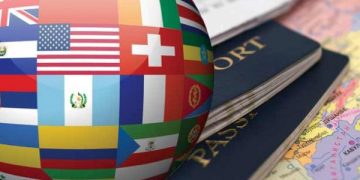[ad_1]
The next article lists some easy, informative suggestions that can assist you’ve got a greater expertise with The Colonial Interval.
The Colonial Interval
NEW PEOPLES
Most settlers who got here to America within the Seventeenth century had been English, however there have been additionally Dutch, Swedes and Germans within the center area, just a few French Huguenots in South Carolina and elsewhere, slaves from Africa, primarily within the South, and a scattering of Spaniards, Italians and Portuguese all through the colonies.
After 1680 England ceased to be the chief supply of immigration. Hundreds of refugees fled continental Europe to flee the trail of battle. Many left their homelands to keep away from the poverty induced by authorities oppression and absentee-landlordism.
By 1690 the American inhabitants had risen to 1 / 4 of one million. From then on, it doubled each 25 years till, in 1775, it numbered greater than 2.5 million.
Though a household might transfer from Massachusetts to Virginia or from South Carolina to Pennsylvania, with out main readjustment, distinctions between particular person colonies had been marked. They had been much more so between the three regional groupings of colonies
NEW ENGLAND
New England within the northeast has usually skinny, stony soil, comparatively little stage land, and lengthy winters, making it tough to make a dwelling from farming. Turning to different pursuits, the New Englanders harnessed water energy and established grain mills and sawmills. Good stands of timber inspired shipbuilding. Wonderful harbors promoted commerce, and the ocean grew to become a supply of nice wealth. In Massachusetts, the cod business alone rapidly furnished a foundation for prosperity.
With the majority of the early settlers dwelling in villages and cities across the harbors, many New Englanders carried on some type of commerce or enterprise. Frequent pasture land and woodlots served the wants of townspeople, who labored small farms close by. Compactness made potential the village college, the village church and the village or city corridor, the place residents met to debate issues of widespread curiosity.
The Massachusetts Bay Colony continued to broaden its commerce. From the center of the Seventeenth century onward it grew affluent, and Boston grew to become one in every of America’s best ports.
Oak timber for ships’ hulls, tall pines for spars and masts, and pitch for the seams of ships got here from the Northeastern forests. Constructing their very own vessels and crusing them to ports all around the world, the ship masters of Massachusetts Bay laid the muse for a commerce that was to develop steadily in significance. By the top of the colonial interval, one-third of all vessels below the British flag had been inbuilt New England. Fish, ship’s shops and picket ware swelled the exports.
New England shippers quickly found, too, that rum and slaves had been worthwhile commodities. One of the vital enterprising — if unsavory — buying and selling practices of the time was the so-called “triangular commerce.” Retailers and shippers would buy slaves off the coast of Africa for New England rum, then promote the slaves within the West Indies the place they’d purchase molasses to deliver residence on the market to the native rum producers.
THE MIDDLE COLONIES
Society within the center colonies was much more diverse, cosmopolitan and tolerant than in New England. In some ways, Pennsylvania and Delaware owed their preliminary success to William Penn.
Underneath his steerage, Pennsylvania functioned easily and grew quickly. By 1685 its inhabitants was virtually 9,000. The guts of the colony was Philadelphia, a metropolis quickly to be identified for its broad, tree-shaded streets, substantial brick and stone homes, and busy docks. By the top of the colonial interval, practically a century later, 30,000 folks lived there, representing many languages, creeds and trades. Their expertise for profitable enterprise enterprise made town one of many thriving facilities of colonial America.
Although the Quakers dominated in Philadelphia, elsewhere in Pennsylvania others had been nicely represented. Germans grew to become the colony’s most skillful farmers. Essential, too, had been cottage industries similar to weaving, shoe making, cabinetmaking and different crafts.
Pennsylvania was additionally the principal gateway into the New World for the Scots-Irish, who moved into the colony within the early 18th century. “Daring and indigent strangers,” as one Pennsylvania official known as them, they hated the English and had been suspicious of all authorities. The Scots-Irish tended to settle within the again nation, the place they cleared land and lived by looking and subsistence farming.
As blended because the folks had been in Pennsylvania, New York finest illustrated the polyglot nature of America. By 1646 the inhabitants alongside the Hudson River included Dutch, French, Danes, Norwegians, Swedes, English, Scots, Irish, Germans, Poles, Bohemians, Portuguese and Italians — the forerunners of hundreds of thousands to return.
The Dutch continued to train an necessary social and financial affect on the New York area lengthy after the autumn of New Netherlands and their integration into the British colonial system. Their sharp-stepped, gable roofs grew to become a everlasting a part of town’s structure, and their retailers gave Manhattan a lot of its authentic bustling, business environment.
THE SOUTHERN COLONIES
In distinction to New England and the center colonies had been the predominantly rural southern settlements: Virginia, Maryland, North and South Carolina, and Georgia.
By the late Seventeenth century, Virginia’s and Maryland’s financial and social construction rested on the nice planters and the yeoman farmers. The planters of the tidewater area, supported by slave labor, held many of the political energy and the perfect land. They constructed nice homes, adopted an aristocratic lifestyle and saved in contact as finest they might with the world of tradition abroad.
On the similar time, yeoman farmers, who labored smaller tracts of land, sat in well-liked assemblies and located their manner into political workplace. Their outspoken independence was a relentless warning to the oligarchy of planters to not encroach too far upon the rights of free males.
Charleston, South Carolina, grew to become the main port and buying and selling middle of the South. There the settlers rapidly realized to mix agriculture and commerce, and {the marketplace} grew to become a serious supply of prosperity. Dense forests additionally introduced income: lumber, tar and resin from the lengthy leaf pine supplied a number of the finest shipbuilding supplies on the planet. Not sure to a single crop as was Virginia, North and South Carolina additionally produced and exported rice and indigo, a blue dye obtained from native crops, which was utilized in coloring material. By 1750 greater than 100,000 folks lived within the two colonies of North and South Carolina.
Within the southern-most colonies, as in all places else, inhabitants progress within the again nation had particular significance. German immigrants and Scots-Irish, unwilling to stay within the authentic tidewater settlements the place English affect was robust, pushed inland. Those that couldn’t safe fertile land alongside the coast, or who had exhausted the lands they held, discovered the hills farther west a bountiful refuge. Though their hardships had been huge, stressed settlers saved coming, and by the 1730s they had been pouring into the Shenandoah Valley of Virginia. Quickly the inside was dotted with farms.
Residing on the sting of the Indian nation, frontier households constructed cabins, cleared tracts within the wilderness and cultivated maize and wheat. The boys wore leather-based comprised of the pores and skin of deer or sheep, generally known as buckskin; the ladies wore clothes of material they spun at residence. Their meals consisted of venison, wild turkey and fish. That they had their very own amusements — nice barbecues, dances, housewarmings for newly married {couples}, capturing matches and contests for making quilted blankets. Quilts stay an American custom as we speak.
SOCIETY, SCHOOLS AND CULTURE
A big issue deterring the emergence of a strong aristocratic or gentry class within the colonies was the truth that anybody in a longtime colony might select to discover a new residence on the frontier. Thus, time after time, dominant tidewater figures had been obliged, by the specter of a mass exodus to the frontier, to liberalize political insurance policies, land-grant necessities and non secular practices. This motion into the foothills was of great import for the way forward for America.
Of equal significance for the longer term had been the foundations of American schooling and tradition established in the course of the colonial interval. Harvard School was based in 1636 in Cambridge, Massachusetts. Close to the top of the century, the School of William and Mary was established in Virginia. A number of years later, the Collegiate Faculty of Connecticut, later to turn out to be Yale School, was chartered. However much more noteworthy was the expansion of a faculty system maintained by governmental authority. The Puritan emphasis on studying straight from the Scriptures underscored the significance of literacy.
In 1647 the Massachusetts Bay Colony enacted the “ye olde deluder Devil” Act, requiring each city having greater than 50 households to ascertain a grammar college (a Latin college to organize college students for school). Shortly thereafter, all the opposite New England colonies, besides Rhode Island, adopted its instance.
The primary immigrants in New England introduced their very own little libraries and continued to import books from London. And as early because the 1680s, Boston booksellers had been doing a thriving enterprise in works of classical literature, historical past, politics, philosophy, science, theology and belles-letters. In 1639 the primary printing press within the English colonies and the second in North America was put in at Harvard School.
The primary college in Pennsylvania was begun in 1683. It taught studying, writing and holding of accounts. Thereafter, in some trend, each Quaker neighborhood supplied for the elementary instructing of its kids. Extra superior coaching — in classical languages, historical past and literature — was provided on the Associates Public Faculty, which nonetheless operates in Philadelphia because the William Penn Constitution Faculty. The college was free to the poor, however dad and mom who might had been required to pay tuition.
In Philadelphia, quite a few personal faculties with no non secular affiliation taught languages, arithmetic and pure science; there have been additionally evening faculties for adults. Girls weren’t completely neglected, however their academic alternatives had been restricted to coaching in actions that could possibly be performed within the residence. Non-public academics instructed the daughters of affluent Philadelphians in French, music, dancing, portray, singing, grammar and generally even bookkeeping.
Within the 18th century, the mental and cultural growth of Pennsylvania mirrored, in massive measure, the vigorous personalities of two males: James Logan and Benjamin Franklin. Logan was secretary of the colony, and it was in his wonderful library that younger Franklin discovered the newest scientific works. In 1745 Logan erected a constructing for his assortment and bequeathed each constructing and books to town.
Franklin contributed much more to the mental exercise of Philadelphia. He shaped a debating membership that grew to become the embryo of the American Philosophical Society. His endeavors additionally led to the founding of a public academy that later developed into the College of Pennsylvania. He was a primary mover within the institution of a subscription library, which he known as “the mom of all North American subscription libraries.”
Within the Southern colonies, rich planters and retailers imported personal tutors from Eire or Scotland to show their kids. Others despatched their kids to highschool in England. Having these different alternatives, the higher lessons within the Tidewater weren’t considering supporting public schooling. As well as, the diffusion of farms and plantations made the formation of neighborhood faculties tough. There have been just a few endowed free faculties in Virginia; the Syms Faculty was based in 1647 and the Eaton Faculty emerged in 1659.
The will for studying didn’t cease on the borders of established communities, nevertheless. On the frontier, the Scots-Irish, although dwelling in primitive cabins, had been agency devotees of scholarship, and so they made nice efforts to draw realized ministers to their settlements.
Literary manufacturing within the colonies was largely confined to New England. Right here consideration focused on non secular topics. Sermons had been the most typical merchandise of the press. A well-known Puritan minister, the Reverend Cotton Mather, wrote some 400 works. His masterpiece, Magnalia Christi Americana, offered the pageant of New England’s historical past. However the most well-liked single work of the day was the Reverend Michael Wigglesworth’s lengthy poem, “The Day of Doom,” which described the final judgment in terrifying phrases.
In 1704 Cambridge, Massachusetts, launched the colonies’ first profitable newspaper. By 1745 there have been 22 newspapers being printed all through the colonies.
How will you put a restrict on studying extra? The following part might include that one little little bit of knowledge that modifications the whole lot.
In New York, an necessary step in establishing the precept of freedom of the press happened with the case of Johann Peter Zenger, whose New York Weekly Journal begun in 1733, represented the opposition to the federal government. After two years of publication, the colonial governor might now not tolerate Zenger’s satirical barbs, and had him thrown into jail on a cost of seditious libel. Zenger continued to edit his paper from jail throughout his nine-month trial, which excited intense curiosity all through the colonies. Andrew Hamilton, the outstanding lawyer who defended Zenger, argued that the costs printed by Zenger had been true and therefore not libelous. The jury returned a verdict of not responsible, and Zenger went free.
The prosperity of the cities, which prompted fears that the satan was luring society into pursuit of worldly acquire, produced a non secular response within the 1730s that got here to be generally known as the Nice Awakening. Its inspiration got here from two sources: George Whitefield, a Wesleyan revivalist who arrived from England in 1739, and Jonathan Edwards, who initially served within the Congregational Church in Northampton, Massachusetts.
Whitefield started a non secular revival in Philadelphia after which moved on to New England. He enthralled audiences of as much as 20,000 folks at a time with histrionic shows, gestures and emotional oratory. Spiritual turmoil swept all through New England and the center colonies as ministers left established church buildings to evangelise the revival.
Amongst these influenced by Whitefield was Edwards, and the Nice Awakening reached its end result in 1741 together with his sermon “Sinners within the Arms of an Indignant God.” Edwards didn’t have interaction in theatrics, however delivered his sermons in a quiet, considerate method. He confused that the established church buildings sought to deprive Christianity of its emotional content material. His magnum opus, Of Freedom of Will (1754), tried to reconcile Calvinism with the Enlightenment.
The Nice Awakening gave rise to evangelical denominations and the spirit of revivalism, which proceed to play vital roles in American non secular and cultural life. It weakened the standing of the established clergy and provoked believers to depend on their very own conscience. Maybe most necessary, it led to the proliferation of sects and denominations, which in flip inspired basic acceptance of the precept of non secular toleration.
EMERGENCE OF COLONIAL GOVERNMENT
In all phases of colonial growth, a placing characteristic was the shortage of controlling affect by the English authorities. All colonies besides Georgia emerged as corporations of shareholders, or as feudal proprietorships stemming from charters granted by the Crown. The truth that the king had transferred his rapid sovereignty over the New World settlements to inventory corporations and proprietors didn’t, after all, imply that the colonists in America had been essentially free of out of doors management. Underneath the phrases of the Virginia Firm constitution, for instance, full governmental authority was vested within the firm itself. However, the crown anticipated that the corporate can be resident in England. Inhabitants of Virginia, then, would don’t have any extra voice of their authorities than if the king himself had retained absolute rule.
For his or her half, the colonies had by no means considered themselves as subservient. Relatively, they thought-about themselves mainly as commonwealths or states, very similar to England itself, having solely a unfastened affiliation with the authorities in London. In a method or one other, unique rule from the surface withered away. The colonists — inheritors of the traditions of the Englishman’s lengthy wrestle for political liberty — integrated ideas of freedom into Virginia’s first constitution. It supplied that English colonists had been to train all liberties, franchises and immunities “as if they’d been abiding and born inside this our Realm of England.” They had been, then, to take pleasure in the advantages of the Magna Carta and the widespread regulation. In 1618 the Virginia Firm issued directions to its appointed governor offering that free inhabitants of the plantations ought to elect representatives to hitch with the governor and an appointive council in passing ordinances for the welfare of the colony.
These measures proved to be a number of the most far-reaching in all the colonial interval. From then on, it was usually accepted that the colonists had a proper to take part in their very own authorities. In most cases, the king, in making future grants, supplied within the constitution that the free males of the colony ought to have a voice in laws affecting them. Thus, charters awarded to the Calverts in Maryland, William Penn in Pennsylvania, the proprietors in North and South Carolina and the proprietors in New Jersey specified that laws needs to be enacted with “the consent of the freemen.”
In New England, for a few years, there was much more full self-government than within the different colonies. Aboard the Mayflower, the Pilgrims adopted an instrument for presidency known as the “Mayflower Compact,” to “mix ourselves collectively right into a civil physique politic for our higher ordering and preservation…and by advantage hereof [to] enact, represent, and body such simply and equal legal guidelines, ordinances, acts, constitutions, and places of work…as shall be thought most meet and handy for the overall good of the colony….”
Though there was no authorized foundation for the Pilgrims to ascertain a system of self-government, the motion was not contested and, below the compact, the Plymouth settlers had been ready for a few years to conduct their very own affairs with out exterior interference.
An analogous state of affairs developed within the Massachusetts Bay Firm, which had been given the appropriate to control itself. Thus, full authority rested within the palms of individuals residing within the colony. At first, the dozen or so authentic members of the corporate who had come to America tried to rule autocratically. However the different colonists quickly demanded a voice in public affairs and indicated that refusal would result in a mass migration.
Confronted with this risk, the corporate members yielded, and management of the federal government handed to elected representatives. Subsequently, different New England colonies — similar to Connecticut and Rhode Island — additionally succeeded in changing into self-governing just by asserting that they had been past any governmental authority, after which organising their very own political system modeled after that of the Pilgrims at Plymouth.
In solely two instances was the self-government provision omitted. These had been New York, which was granted to Charles II’s brother, the Duke of York (later to turn out to be King James II); and Georgia, which was granted to a gaggle of “trustees.” In each cases the provisions for governance had been short-lived, for the colonists demanded legislative illustration so insistently that the authorities quickly yielded.
Ultimately most colonies grew to become royal colonies, however within the mid-Seventeenth century, the English had been too distracted by the Civil Battle (1642-1649) and Oliver Cromwell’s Puritan Commonwealth and Protectorate to pursue an efficient colonial coverage. After the restoration of Charles II and the Stuart dynasty in 1660, England had extra alternative to take care of colonial administration. Even then, nevertheless, it was inefficient and lacked a coherent plan, and the colonies had been left largely to their very own gadgets.
The remoteness afforded by an unlimited ocean additionally made management of the colonies tough. Added to this was the character of life itself in early America. From nations restricted in house and dotted with populous cities, the settlers had come to a land of seemingly endless attain. On such a continent, pure circumstances promoted a tricky individualism, as folks grew to become used to creating their very own choices. Authorities penetrated the again nation solely slowly, and circumstances of anarchy usually prevailed on the frontier.
But, the belief of self-government within the colonies didn’t go completely unchallenged. Within the 1670s, the Lords of Commerce and Plantations, a royal committee established to implement the mercantile system on the colonies, moved to annul the Massachusetts Bay constitution, as a result of the colony was resisting the federal government’s financial coverage. James II in 1685 authorized a proposal to create a Dominion of New England and place colonies south by New Jersey below its jurisdiction, thereby tightening the Crown’s management over the entire area. A royal governor, Sir Edmund Andros, levied taxes by govt order, carried out various different harsh measures and jailed those that resisted.
When information of the Superb Revolution (1688-1689) that deposed James II reached Boston, the inhabitants rebelled and imprisoned Andros. Underneath a brand new constitution, Massachusetts and Plymouth had been united for the primary time in 1691 because the royal colony of Massachusetts Bay. The opposite colonies that had come below the Dominion of New England rapidly reinstalled their earlier governments.
The Superb Revolution had different constructive results on the colonies. The Invoice of Rights and Toleration Act of 1689 affirmed freedom of worship for Christians and enforced limits on the Crown. Equally necessary, John Locke’s Second Treatise on Authorities (1690) set forth a idea of presidency primarily based not on divine proper however on contract, and contended that the folks, endowed with pure rights of life, liberty and property, had the appropriate to insurgent when governments violated these pure rights.
Colonial politics within the early 18th century resembled English politics within the Seventeenth. The Superb Revolution affirmed the supremacy of Parliament, however colonial governors sought to train powers within the colonies that the king had misplaced in England. The colonial assemblies, conscious of occasions in England, tried to claim their “rights” and “liberties.” By the early 18th century, the colonial legislatures held two vital powers just like these held by the English Parliament: the appropriate to vote on taxes and expenditures, and the appropriate to provoke laws reasonably than merely act on proposals of the governor.
The legislatures used these rights to examine the ability of royal governors and to cross different measures to broaden their energy and affect. The recurring clashes between governor and meeting labored more and more to awaken the colonists to the divergence between American and English pursuits. In lots of instances, the royal authorities didn’t perceive the significance of what the colonial assemblies had been doing and easily uncared for them. Nonetheless, these acts established precedents and rules and ultimately grew to become a part of the “structure” of the colonies.
On this manner, the colonial legislatures established the appropriate of self- authorities. In time, the middle of colonial administration shifted from London to the provincial capitals.
THE FRENCH AND INDIAN WAR
France and Britain engaged in a succession of wars in Europe and the Caribbean at a number of intervals within the 18th century. Although Britain secured sure benefits from them — primarily within the sugar-rich islands of the Caribbean — the struggles had been usually indecisive, and France remained in a strong place in North America originally of the Seven Years Battle in 1754.
By that point France had established a powerful relationship with various Indian tribes in Canada and alongside the Nice Lakes, taken possession of the Mississippi River and, by establishing a line of forts and buying and selling posts, marked out an important crescent-shaped empire stretching from Quebec to New Orleans. Thus, the British had been confined to the slender belt east of the Appalachian Mountains. The French threatened not solely the British Empire however the American colonists themselves, for in holding the Mississippi Valley, France might restrict their westward growth.
An armed conflict happened in 1754 at Fort Duquesne, the positioning the place Pittsburgh, Pennsylvania, is now positioned, between a band of French regulars and Virginia militiamen below the command of 22-year-old George Washington, a Virginia planter and surveyor.
In London, the Board of Commerce tried to cope with the battle by calling a gathering of representatives from New York, Pennsylvania, Maryland and the New England colonies. From June 19 to July 10, the Albany Congress, because it got here to be identified, met with the Iroquois at Albany, New York, in an effort to enhance relations with them and safe their loyalty to the British.
The delegates additionally declared a union of the American colonies “completely crucial for his or her preservation,” and adopted the Albany Plan of Union. Drafted by Benjamin Franklin, the plan supplied {that a} president appointed by the king act with a grand council of delegates chosen by the assemblies, with every colony to be represented in proportion to its monetary contributions to the overall treasury. This organ would have cost of protection, Indian relations, and commerce and settlement of the west, in addition to having the ability to levy taxes. However not one of the colonies accepted Franklin’s plan, for none wished to give up both the ability of taxation or management over the event of the western lands to a government.
England’s superior strategic place and her competent management in the end introduced victory within the Seven Years’ Battle, solely a modest portion of which was fought within the Western Hemisphere.
Within the Peace of Paris, signed in 1763, France relinquished all of Canada, the Nice Lakes and the higher Mississippi Valley to the British. The dream of a French empire in North America was over. Having triumphed over France, Britain was now compelled to face an issue that it had hitherto uncared for — the governance of its empire. It was important that London arrange its now huge possessions to facilitate protection, reconcile the divergent pursuits of various areas and peoples, and distribute extra evenly the price of imperial administration.
In North America alone, British territories had greater than doubled. To the slender strip alongside the Atlantic coast had been added the huge expanse of Canada and the territory between the Mississippi River and the Allegheny Mountains, an empire in itself. A inhabitants that had been predominantly Protestant and English now included French-speaking Catholics from Quebec, and enormous numbers of partly Christianized Indians. Protection and administration of the brand new territories, in addition to of the outdated, would require large sums of cash and elevated personnel. The outdated colonial system was clearly insufficient to those duties.
SIDEBAR: THE WITCHES OF SALEM
In 1692 a gaggle of adolescent ladies in Salem Village, Massachusetts, grew to become topic to unusual suits after listening to tales advised by a West Indian slave. Once they had been questioned, they accused a number of ladies of being witches who had been tormenting them. The townspeople had been appalled however not shocked: perception in witchcraft was widespread all through Seventeenth-century America and Europe.
What occurred subsequent — though an remoted occasion in American historical past — offers a vivid window into the social and psychological world of Puritan New England. City officers convened a courtroom to listen to the costs of witchcraft, and swiftly convicted and executed a tavernkeeper, Bridget Bishop. Inside a month, 5 different ladies had been convicted and hanged.
However, the hysteria grew, in massive measure as a result of the courtroom permitted witnesses to testify that they’d seen the accused as spirits or in visions. By its very nature, such “spectral proof” was particularly harmful, as a result of it could possibly be neither verified nor topic to goal examination. By the autumn of 1692, greater than 20 victims, together with a number of males, had been executed, and greater than 100 others had been in jail — amongst them a number of the city’s most outstanding residents. However now the hysteria threatened to unfold past Salem, and ministers all through the colony known as for an finish to the trials. The governor of the colony agreed and dismissed the courtroom. These nonetheless in jail had been later acquitted or given reprieves.
The Salem witch trials have lengthy fascinated People. On a psychological stage, most historians agree that Salem Village in 1692 was seized by a type of public hysteria, fueled by a real perception within the existence of witchcraft. They level out that, whereas a number of the ladies might have been performing, many accountable adults grew to become caught up within the frenzy as nicely.
However much more revealing is a better evaluation of the identities of the accused and the accusers. Salem Village, like a lot of colonial New England at the moment, was present process an financial and political transition from a largely agrarian, Puritan-dominated neighborhood to a extra business, secular society. Most of the accusers had been representatives of a conventional lifestyle tied to farming and the church, whereas various the accused witches had been members of the rising business class of small shopkeepers and tradesmen. Salem’s obscure wrestle for social and political energy between older conventional teams and a more recent business class was one repeated in communities all through American historical past . However it took a weird and lethal detour when its residents had been swept up by the conviction that the satan was unfastened of their houses.
The Salem witch trials additionally function a dramatic parable of the lethal penalties of constructing sensational, however false, costs. Certainly, a frequent time period in political debate for making false accusations in opposition to a lot of folks is “witch hunt.”
It by no means hurts to be well-informed with the newest on The Colonial Interval. Examine what you have realized right here to future articles so to keep alert to modifications within the space of The Colonial Interval.
[ad_2]
Source by Floyd Dorrance











![[5] Elysian EMPIRE?! | EU4 Third Odyssey | Elysia](https://198immigrationnews.com/wp-content/uploads/2021/10/1634740868_maxresdefault-120x86.jpg)












